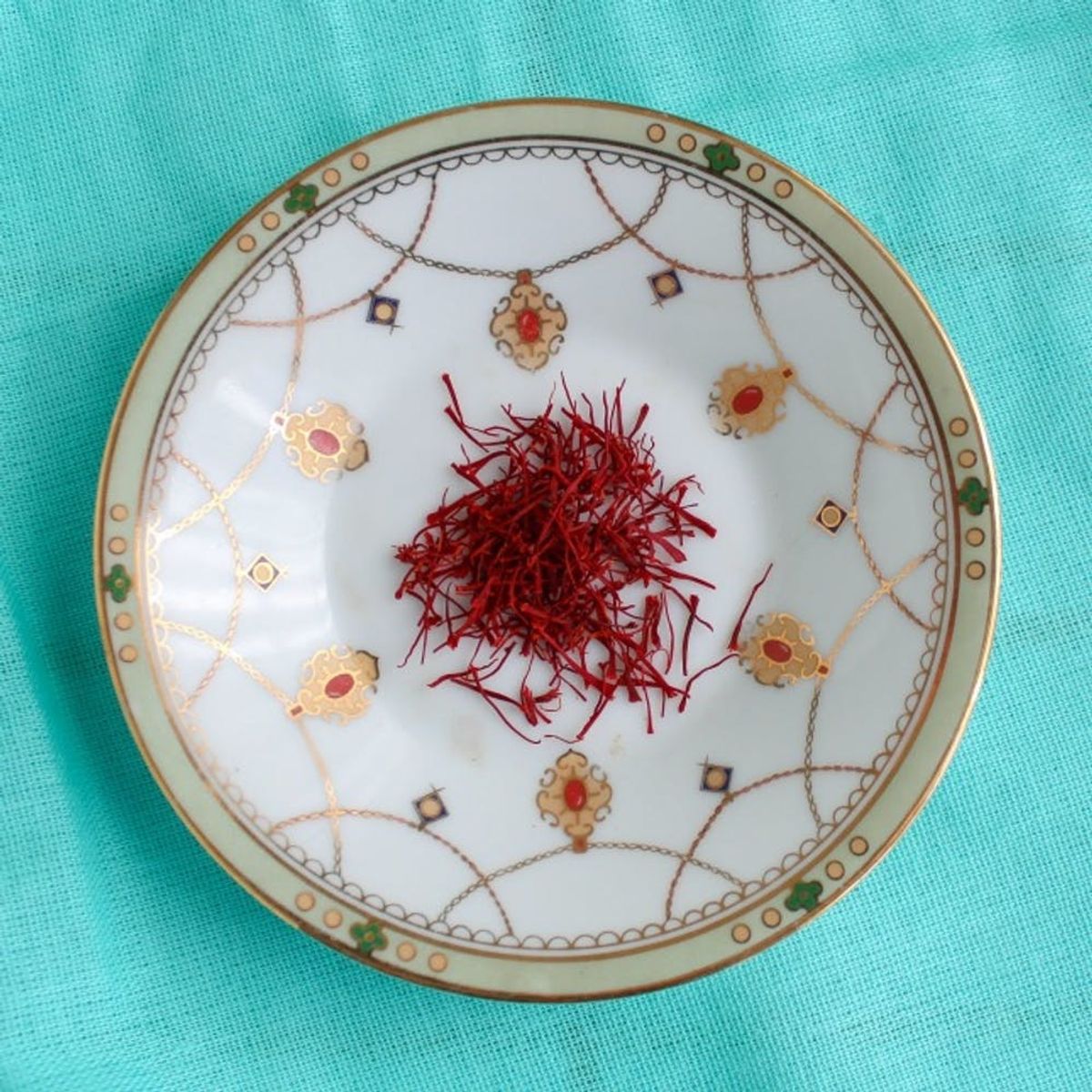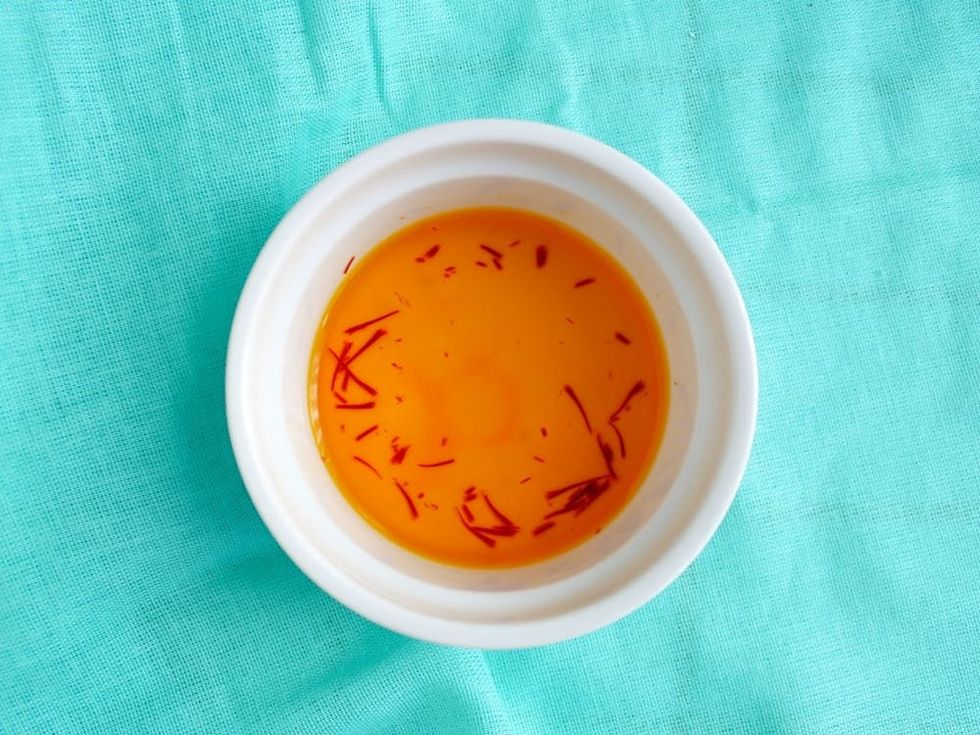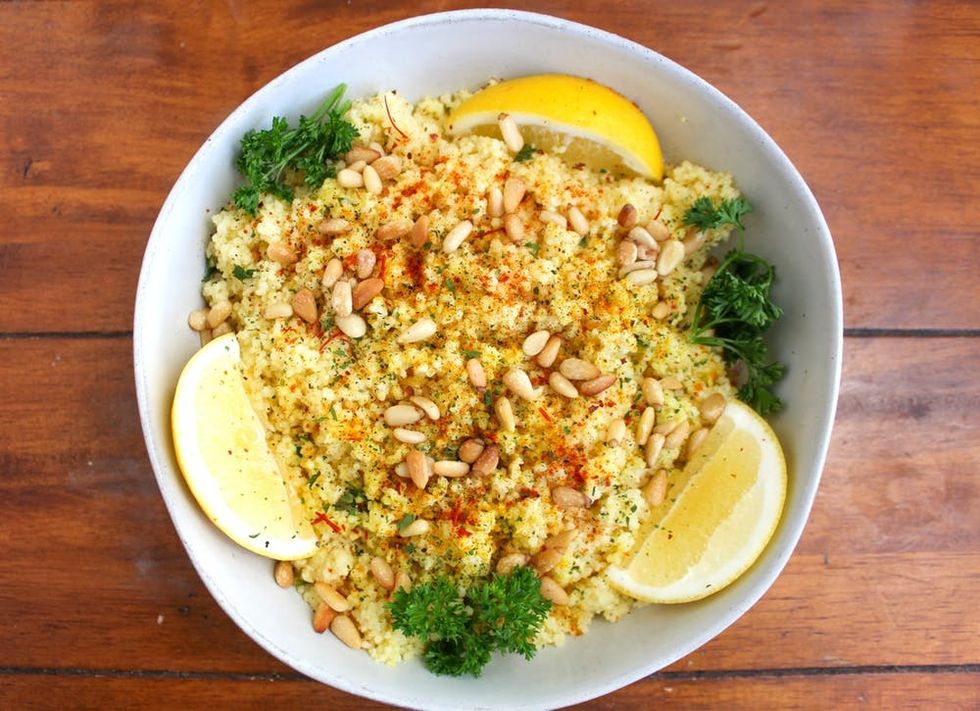How (and Why!) to Cook With Colorful, Fragrant Saffron

To give a dish a touch of something special, saffron is the first ingredient to reach for. Used for centuries to jazz up celebratory meals both sweet and savory, saffron can make a dish as simple as a bowl of rice feel a little more elevated. Like many precious spices, it’s definitely a bit expensive. It more than makes up for its cost though, because even just a tiny pinch can add a distinctive color and fragrance to your food. Learn how to incorporate saffron into your meals below, and get ready to clear space in your spice rack for this fascinating ingredient.

What is Saffron?
Saffron is expensive for a reason. It’s made up of the stigmas and styles of the purple crocus flower, picked meticulously by hand and then dried. Saffron has a unique flavor and fragrance that’s hard to describe. Some liken it to fresh hay, others, soap, “but in a good way.” Sounds strange, but trust us — it’s delicious! Though the saffron threads are a vibrant crimson, they turn foods a gorgeous golden color. Saffron likely originated in Greece, but it’s now used in dishes throughout the Middle East and Mediterranean, North Africa, and India. Saffron should be expensive, so if it seems cheap, it’s probably a low-quality product, or even a knock-off dyed with annatto or turmeric. We like Persian saffron for its great cost-to-flavor ratio that makes it less scary to experiment with in the kitchen; the highest quality (and most expensive) saffron often comes from Spain.

How to use Saffron
In order for saffron’s color and flavor to develop, it first needs to be bloomed in warm liquid — you can’t just sprinkle it onto a dish. Heat up a small portion of water, stock, or wine, take it off the heat, and add a pinch of saffron. You should see the liquid start to turn a robust yellow-gold. You can then add this liquid to whatever dish you’re making.
Some easy ways to use saffron include:
- Infuse broth with saffron, then use the broth to make rice, bulgur, couscous (pictured below), or another grain
- Add a saffron-infused white wine to fish soups, stews, and braises
- Jazz up sauce for roast chicken by blooming saffron in the pan drippings before making gravy
- Add an intriguing flavor boost to desserts by blooming saffron in some warmed milk, then adding to your recipe (It’s delicious in vanilla ice cream along with a teaspoon of rosewater or in rice pudding dotted with raisins and swirled with cinnamon.)

What to watch out for
Saffron may be expensive, but you really only need a small pinch of it to add big flavor to your dish. Use too much, and it can totally overwhelm the flavor of your meal. To be on the safe side, taste a bit of the saffron liquid before adding it to your recipe. It should taste strong (it will be competing with the rest of the dish, after all), but not overwhelming. If you do use too much saffron, try adding some unseasoned cooked grains to your dish to help mellow out the flavor, or add some lemon juice to balance the saffron with acid. It can be daunting to try out a new ingredient, but once you get hooked on saffron, there’s no turning back.
Learn how to incorporate more unique ingredients into your meals by following us on Pinterest.
(Photos via Justina Huddleston / Brit + Co)



















